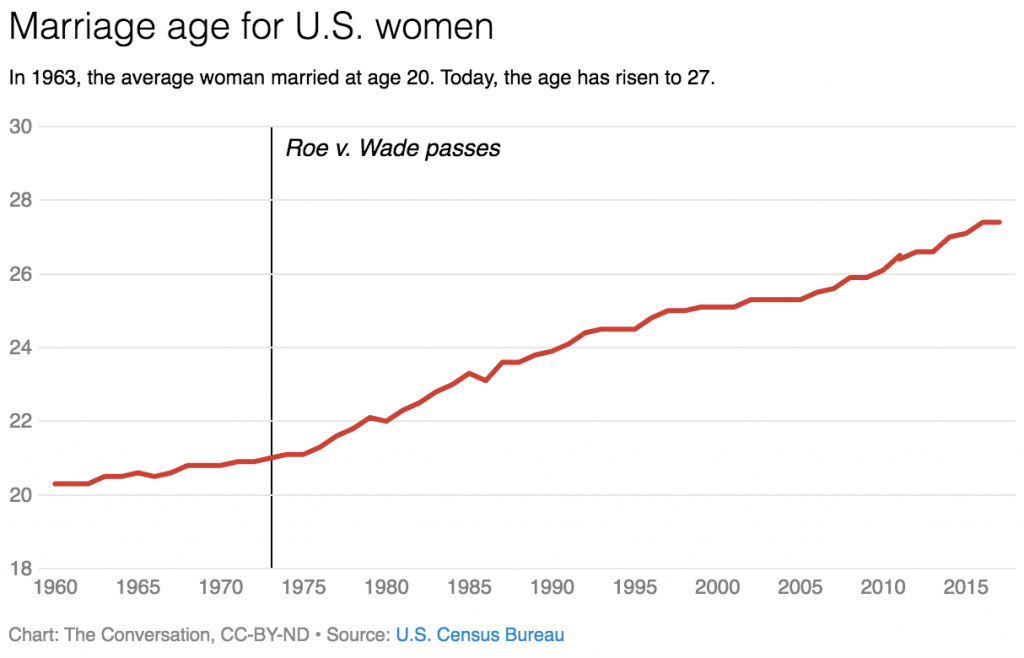I graduated from high school in 1968. Martin Luther King had just been murdered in Memphis, Bobby Kennedy was murdered in a hotel in Los Angeles, the Viet Nam war was raging, American cities were burning, large swaths of public schools were still segregated and Pope Paul VI issued Humanae Vitae, reaffirming the Roman Catholic Church’s opposition to artificial contraception. 1968 was also the year I secretly got my first birth control pills from a Planned Parenthood clinic.
When I was a teenager most parents didn’t feel comfortable sitting down and having conversations about sex with their male or female offspring. It was still the days of “no sex until you’re married” although few teenagers adhered to that edict. What we learned about human sexuality was taught at school in a class called something like “Personal Family Life” and it was all quite scientific. Mostly we stumbled upon the complexities of sexual relations as we experimented in real time. It was obvious that hormones overrode reason, religion and education.
But the time between calm thoughtful teenaged banter and affection, and then full sexual intercourse could pass by in a nanosecond. In 1968, abortion at any stage and for any reason was illegal unless the mother’s life was unquestionably at risk. Many girls chose to carry their babies to term and went on to live full and productive lives although that path was rarely easy. Those still in high school and unmarried but deciding to give birth tended to drop out of school and were forced to take minimum wage or dead-end jobs.
But let’s not forget, abortion has always been available… sometimes in a clinic run by “Doc Something or Other” (everyone hoped they were licensed doctors but who really knew), sometimes with self-inflicted sharp objects such as coat hangers or knitting needles, or uterus washing with bleach, or over-exercising or over-drinking. Girls tried everything to avoid the consequences following an unwanted pregnancy. Fear, pain, the risk of breaking the law, sterility or death did not deter girls I knew from ending an unwanted pregnancy. In the 1950’s and 1960’s, the estimated number of abortions in the United States ranged from 200,000 to 1.2 million per year, according to the Guttmacher Institute.
When I was growing up girls tended to marry just under 21 years old, and it wasn’t yet common for married women with young children under age six to be employed. According to the US Department of Labor only about 37 percent were in the labor force. Then, as now, finding satisfactory and affordable child care was a challenge for employed mothers.

In 1970, Hawaii became the first state to legalize abortion, followed quickly by New York, Alaska and Washington. So by 1973, I think it’s fair to say that the nation was quite divided on the topic of abortion. And then came the Roe vs. Wade decision in 1973. Girls and women no longer needed to be near death before they could undergo a safe and medically sound end to an unwanted pregnancy.
In the years following Roe, the majority of college students are now women, and women make up close to 50% of the paid labor force. Today, women are postponing marriage, and on average are marrying for the first time at about age 27.
The mechanics of abortion in 2023 have also changed significantly. Over half the abortions in America today are done with the “abortion pill,” the common name for using two different medicines to end a pregnancy: Mifepristone and Misoprostol. Not many women find it necessary to go back to back-alley quacks or use Clorox flushes.
I remember life before Roe v. Wade . . . been there, seen that! We’ll have to see whether those experiencing unwanted pregnancies under the new Dobbs v. Jackson Women’s Health Organization will repeat the pre-Roe v. Wade paradigm. Time will tell . . . but so far . . . it’s just bringing back old memories!
What do you say? Do you want to turn back the clock?

